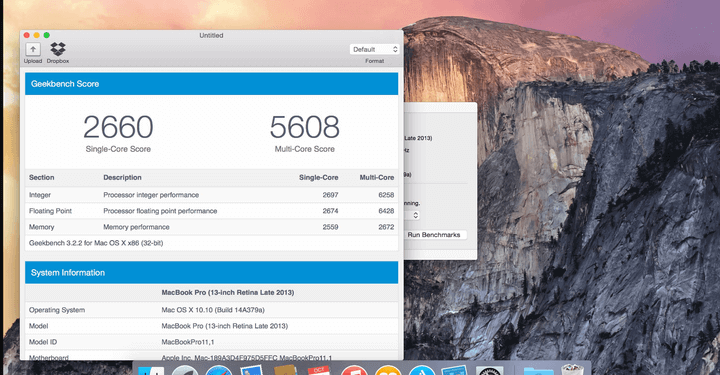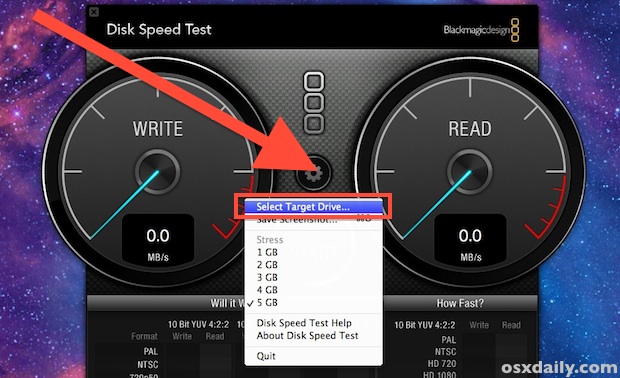
TamoSoft Throughput Test is a utility for testing the performance of a wireless or wired network. This utility continuously sends TCP and UDP data streams across your network and computes important metrics, such as upstream and downstream throughput values, packet loss, and round-trip time, and displays the results in both numeric and chart formats. May 10, 2007 I realize that both hard drives in the operation will cause the variable in speed but I want the sending drive as fast as possible. My thoughts right now are to purchase a 7200rpm external drive to store backup images and also send from. This would cut out any possible IO on the drive that my mac is performing to run the operating system.
Apr 06, 2013 Input/output operations per second or IOPS (IO/s), throughput (MB/s or MiB/s), and response time (ms) are the common performance measurements for storage devices, such disk drives or RAID sets. IOPS measure is generally used to describe storage device capability for handling random small block (4 - 8 KB in size) input-output (IO) requests that are typical for on-line transaction. May 12, 2020 When it comes to choosing External SSDS, the Samsung T5 Portable SSD – 1TB is, without a doubt, your best bet. This SSD, which is compatible with Windows 7, Mac OS X 10.9 (Mavericks), Android 4.4 (KitKat), or higher, has made data management easier than ever before. Pros: Supports RAID Level 0, 1, 5, 6, and 10.Allows for hot-swapping of drives in certain configurations. 4K video editing speed. Cons: No USB-C/Thunderbolt 3 or USB 3.0 ports. Bottom Line: The. Select the root drive in the sidebar (the next step won't with if you only select the volume). Click on Erase. Choose Mac OS Extended (Journaled) as the Format. Choose GUID Partition Map as the. To overcome the read-only obstacle posed by NTFS, use the Disk Utility application that ships with OS X to reformat your drive as Mac OS Extended (Journaled) for Mac-only use or FAT32 for storage-only compatibility with Macs and PCs. Note that the process of reformatting your drive erases any and all files it contains, so back up its contents.
Updated: January 10, 2020 Home » Freeware and Software Reviews » Wireless WiFi Optimization & Network
How to test internal LAN network speed? In order to test and troubleshoot networks we need tools that allow us to generate network traffic and analyze the network’s throughput performance. This is true for both wired and wireless networks. In order to properly troubleshoot a wireless (or wired) network we need a way to benchmark its performance, so as modifications are made we can determine whether or not they really make a difference in the network’s performance.
Alternative 2020 Article ➤ 4 Free P2P Intranet Software – Create Home Office File Sharing Network
This is where these LAN benchmarking tools fits in to test network speed between two computers. The concept is you install a new wireless network and it works perfectly. Run these tools and record the benchmark results for later reference. Sometime in the future when either you or others suspect performance has declined then run these tools again and compare the latest results with those you gathered when the network was first installed and working perfectly.
↓ 01 – LAN Speed Test Lite | Windows | macOS
LAN Speed Test was designed from the ground up to be a simple but powerful tool for measuring file transfer, hard drive, USB Drive, and Local Area Network (LAN) speeds (wired & wireless). First, you pick a folder to test to. This folder can be on a local drive or USB drive, etc. to test the drive speed, or a shared folder on your network to test your network speed.
Next, LAN Speed Test builds a file in memory, then transfers it both ways (without effects of Windows/Mac file caching) while keeping track of the time, and then does the calculations for you. For more advanced users, you can test to LAN Speed Test Server instead of a shared folder to take the slower hard drives out of the process as you are testing from one computer’s RAM to another computer’s RAM. Simple concept and easy to use. You’ll find that LAN Speed Test will quickly become one of your favorite network tools!
- Test the speed of your Local Network by testing to/from network shared folders
- Test the speed of your local drives (USB Drives, hard drives, etc.)
- Compatible with LST Server (v1.5 or later) for real network performance results without hard drive limitations – Even test your WAN (Internet) speed with LST Server
- Ability to choose Network Interface Card for computers with multiple NICs
↓ 02 – HELIOS LanTest | Windows | macOS
HELIOS LanTest is a very popular network performance and reliability testing solution for Mac and Windows clients. It is very easy to use within seconds and scales from single local disk testing, to testing performance of a network volume, as well as multi-user concurrent client testing against a single server volume.
HELIOS LanTest can be downloaded via HELIOS WebShare at Server: http://webshare.helios.de, User name and password are – tools
↓ 03 – TamoSoft Throughput Test | Windows | macOS
TamoSoft Throughput Test is a utility for testing the performance of a wireless or wired network. This utility continuously sends TCP and UDP data streams across your network and computes important metrics, such as upstream and downstream throughput values, packet loss, and round-trip time, and displays the results in both numeric and chart formats. TamoSoft Throughput Test supports both IPv4 and IPv6 connections and allows the user to evaluate network performance depending on the Quality of Service (QoS) settings.
Microsoft Windows: Windows 7, Windows 8, Windows 8.1, Windows 10, Windows Server 2008, Windows Server 2008 R2, Windows Server 2012, Windows Server 2012 R2. Mac OS X: Yosemite (10.10), El Capitan (10.11), Sierra (10.12), High Sierra (10.13), Mojave (10.14). Android (client only): Android 4.1 and newer. iOS (client only): iOS 8.0 and newer.
↓ 04 – LANBench | Windows
LANBench is a simple LAN / TCP Network benchmark utility. It is designed for testing network performance between two computers and is based on Winsock 2.2. LANBench tests TCP performance only and is designed for minimal CPU usage so that the pure performance of your network could be fully tested.
- Multiple simultaneous connections – up to 20 (for load simulation)
- Low CPU overhead for pure network performance test
- Multithreaded utilizing Windows I/O completion port
- Configurable packet size, test duration and transfer mode
↓ 05 – NetIO-GUI | Windows
NetIO-GUI is a Windows frontend for the multiplatform commandline utility ‘netio’. It measures ICMP respond times and network transfer rates for different packet sizes and protocols. All results are stored in a SQLite database file and can easily be compared. NetIO-GUI is preferred to rate the quality of peer-to-peer connections like VPN.
↓ 06 – NetStress | Windows
NetStress allows you to generate network traffic and analyze the network’s throughput performance. The results of that comparison with previous benchmark will indicate whether or not there really is a problem and dictate which steps to take next (if any). Regardless of your technical expertise or how expensive your diagnostic tools, if you are modifying a wireless network or making decisions to modify it and you are not testing throughput then you risk wasting time and resources going down the wrong path.

Hospital Throughput Measures
- Single instance of the application (i.e. each instance can be used as server or server plus client)
- Supports both TCP and UDP data transfers
- Supports multiple data streams
- Variable TCP / UDP segment size
- Rate of packet transmission (Packets Per Second)
- Variable Maximum Transmission Unit (MTU)
- Uplink and downlink modes
- Auto node discovery
- Choice of display units (KBps, Kbps, MBps, Mbps)
- Support for multiple network adapters
↓ 07 – iperf | macOS | Linux
Throughput Measures The Time
iperf is a tool for active measurements of the maximum achievable bandwidth on IP networks. It supports tuning of various parameters related to timing, protocols, and buffers. For each test it reports the bandwidth, loss, and other parameters. The current version, sometimes referred to as iperf3, is a redesign of an original version developed at NLANR/DAST.
iperf3 is a new implementation from scratch, with the goal of a smaller, simpler code base, and a library version of the functionality that can be used in other programs. iperf3 also a number of features found in other tools such as nuttcp and netperf, but were missing from the original iperf. These include, for example, a zero-copy mode and optional JSON output. Note that iperf3 is not backwards compatible with the original iperf.
↓ 08 – PassMark Advanced Network Test | Free Trial | Windows
The network benchmark test will work with any type of TCP/IP connection. Including ethernet, dial up modems, ADSL, cable modems, local area networks (LAN), Wide area networks (WAN) and wireless networking (WiFi). The software has been optimized to use a minimum amount of CPU time, allowing even high speed gigabit ethernet connections to be benchmarked. Users have the ability to change the following test parameters.
- The IP address of the machine acting as the server and the port number used for the test to help with firewall issues.
- The size of the data block used for each send request. It is also possible to select variable sized blocks to measure performance deltas as block size increases or decreases.
- The duration of the test.
- The protocol, either TCP or UDP. The TCP protocol is when data integrity is important (Errors are corrected using data re-transmission). UDP is used with applications that are tolerant to data loss such as video streaming.